
Tetris Forever (NS) - Review
by Evan Norris , posted on 17 November 2024 / 2,243 ViewsTetris is one of those rare games that virtually everyone knows, understands, and enjoys. In part that's due to its ubiquity. In the four decades since it was designed by Russian programmer Alexey Pajitnov, the game has seen 220 official variants across 60-plus platforms. Whether on PCs, consoles, handhelds, smart devices, or even a Chicken McNugget, Tetris is omnipresent. But how did we get here? How did Tetris go from a single computer at the Dorodnitsyn Computing Center at the Moscow Academy of Sciences in 1985 to selling over 520 million units as of 2024? Tetris Forever, the latest installment of Digital Eclipse's "Gold Master Series", aims to find out.
As with previous Digital Eclipse compilations Atari 50 and Llamasoft: The Jeff Minter Story, Tetris Forever deploys an interactive timeline to tell its story. Split into five chapters, the timeline includes video interviews from present day and archival materials from the 80s and 90s to explain the history of Tetris, from its humble origins in the U.S.S.R., to its escape from behind the Iron Curtain, to its rapid worldwide expansion. By pairing the recollections of important players of the era with photos, magazine advertisements, box art, sell sheets, and other primary sources, Digital Eclipse is able, once again, to provide both an immersive virtual museum and a captivating, poignant narrative.
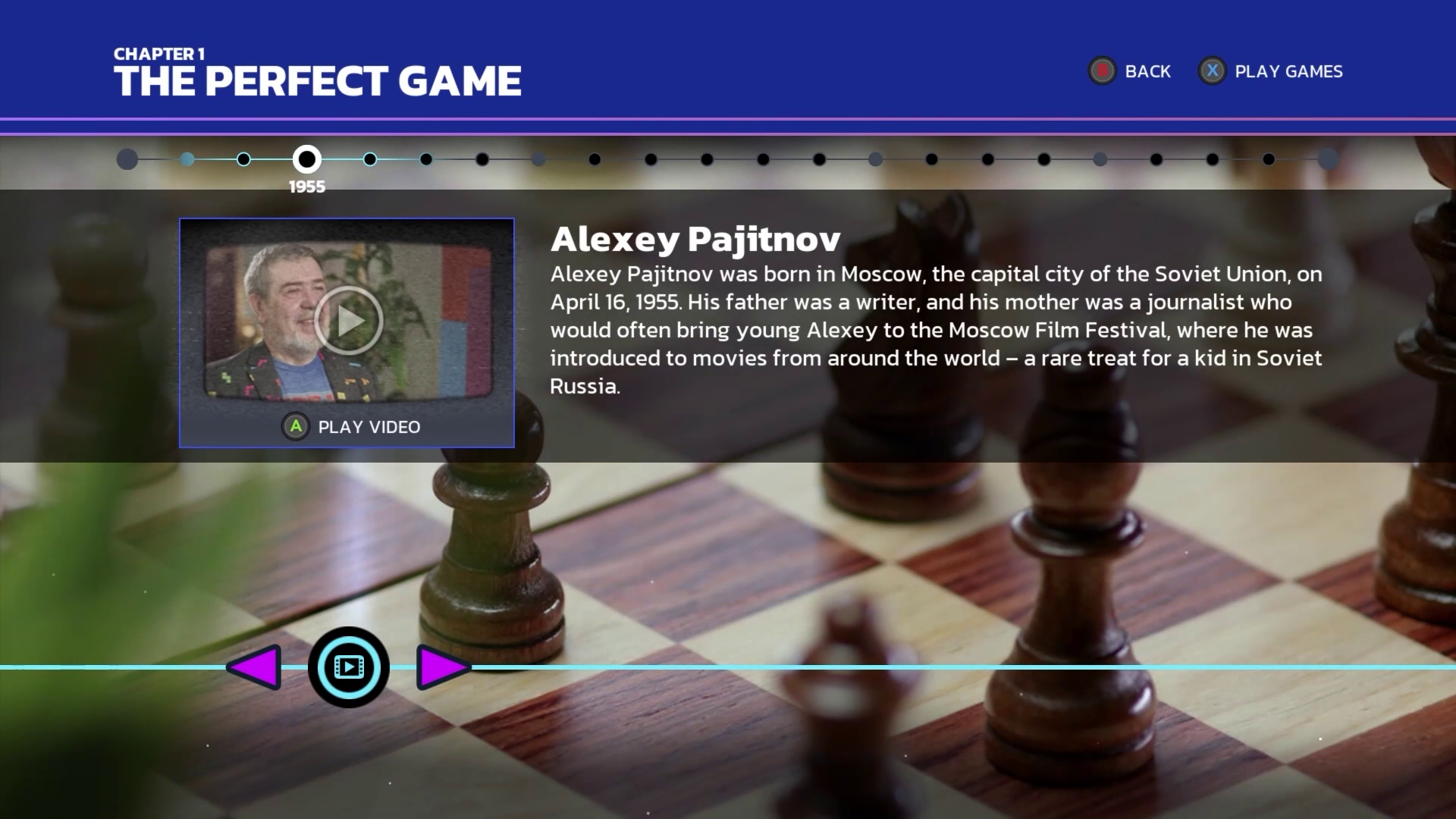
Speaking of the narrative, it's perhaps the best thing about Tetris Forever, surpassing even the collection of games. As one of the finest examples of "the truth is stranger than fiction", the story of Tetris — or, more accurately, the story of Tetris' licensing, advertising, and publishing — is absolutely fascinating. Digital Eclipse, along with Area 5, which produced over two hours of all-new documentary footage specifically for the collection, tells the riveting true story of the game, which found its way to Hungary in 1986, where it was picked up by an enterprising agent who then sub-licensed it to American and British publishers. Two years later it arrived on the show floor at the Winter Consumer Electronics Show in Las Vegas, where it was spotted by game developer Henk Rogers.
Rogers is undeniably the star of Tetris Forever. Described by his daughter Maya Rogers as the "original most interesting man in the world", he's an incredibly gregarious, charismatic, and accomplished individual who more or less steals the spotlight. His adventures in Moscow in 1989 to secure the handheld rights to Tetris are the stuff of legend; there's a reason Apple Studios produced a movie about it last year.
Regrettably, Pajitnov, the architect of Tetris, is sometimes sidelined within the documentary footage. This is clearly not the result of biased editing, but rather due to Pajitnov's own quiet, humble, introverted energy. "Henk loves the attention," says Maya Rogers, "Alexey doesn't want the attention."
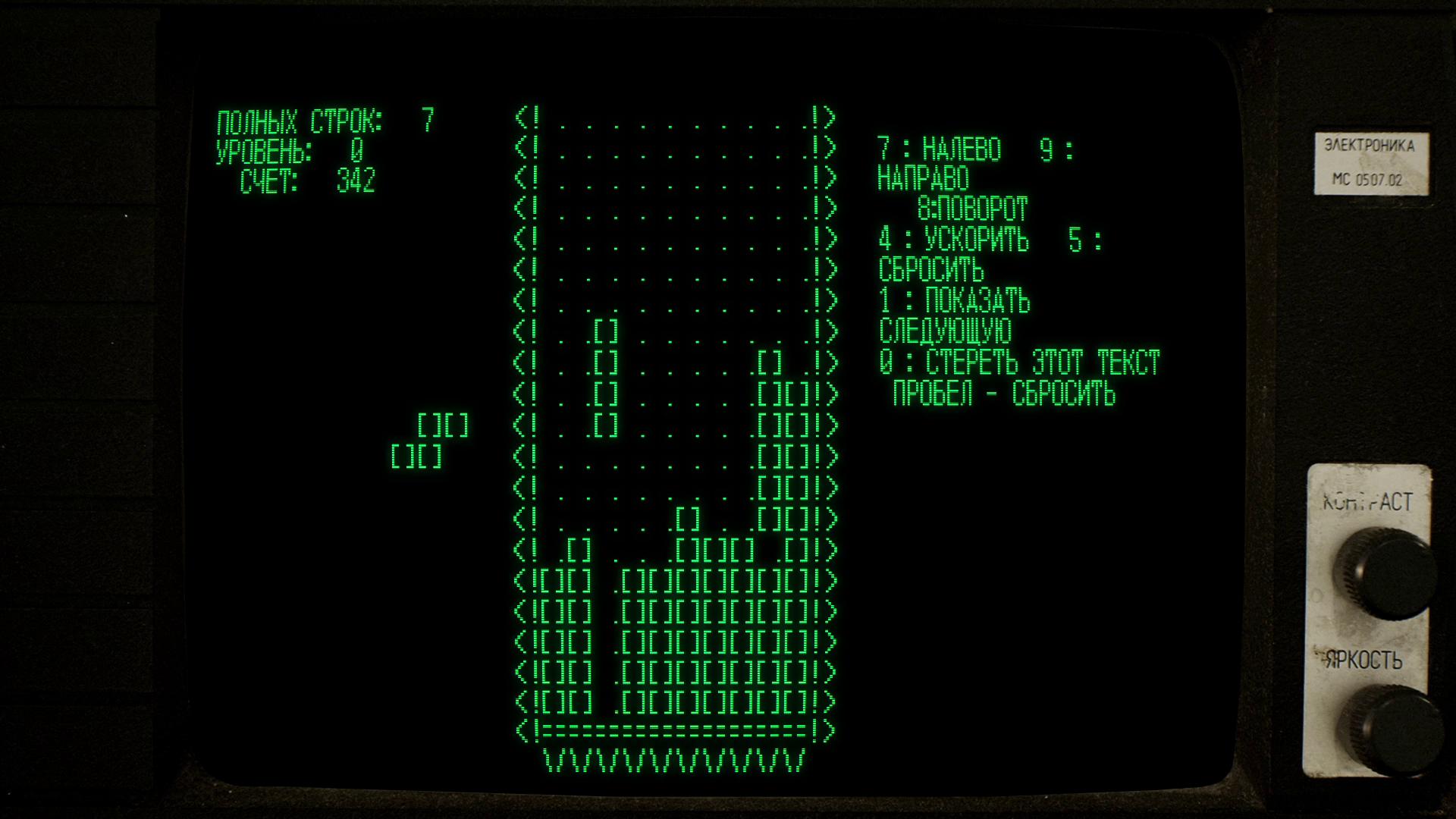
Perhaps Pajitnov was content to let his game speak for itself. Indeed, thanks to 18 playable versions of Tetris, all restored in high-definition and presented chronologically across the interactive timeline, the best-selling game has many opportunities to make its case. One of the most interesting games, if only for its historical significance, is an authentic recreation of the very first version of Tetris, which Pajitnov created on a Soviet Electronika 60 computer system. Thanks to Digital Eclipse's technical wizardry, fans are now able to experience the game as envisioned in 1984.
The collection also features several intriguing titles making their debut outside Japan for the first time: Tetris 2 + Bombliss, developed alongside Dragon Quest veterans Koichi Nakamura and Koichi Sugiyama; Super Tetris 3, which has four modes, including the first-ever four-player version of the game; and, most exciting of all, Tetris Battle Gaiden, a two-player competitive puzzler with eight different playable characters, each with a variety of specific attacks they can launch at an opponent.
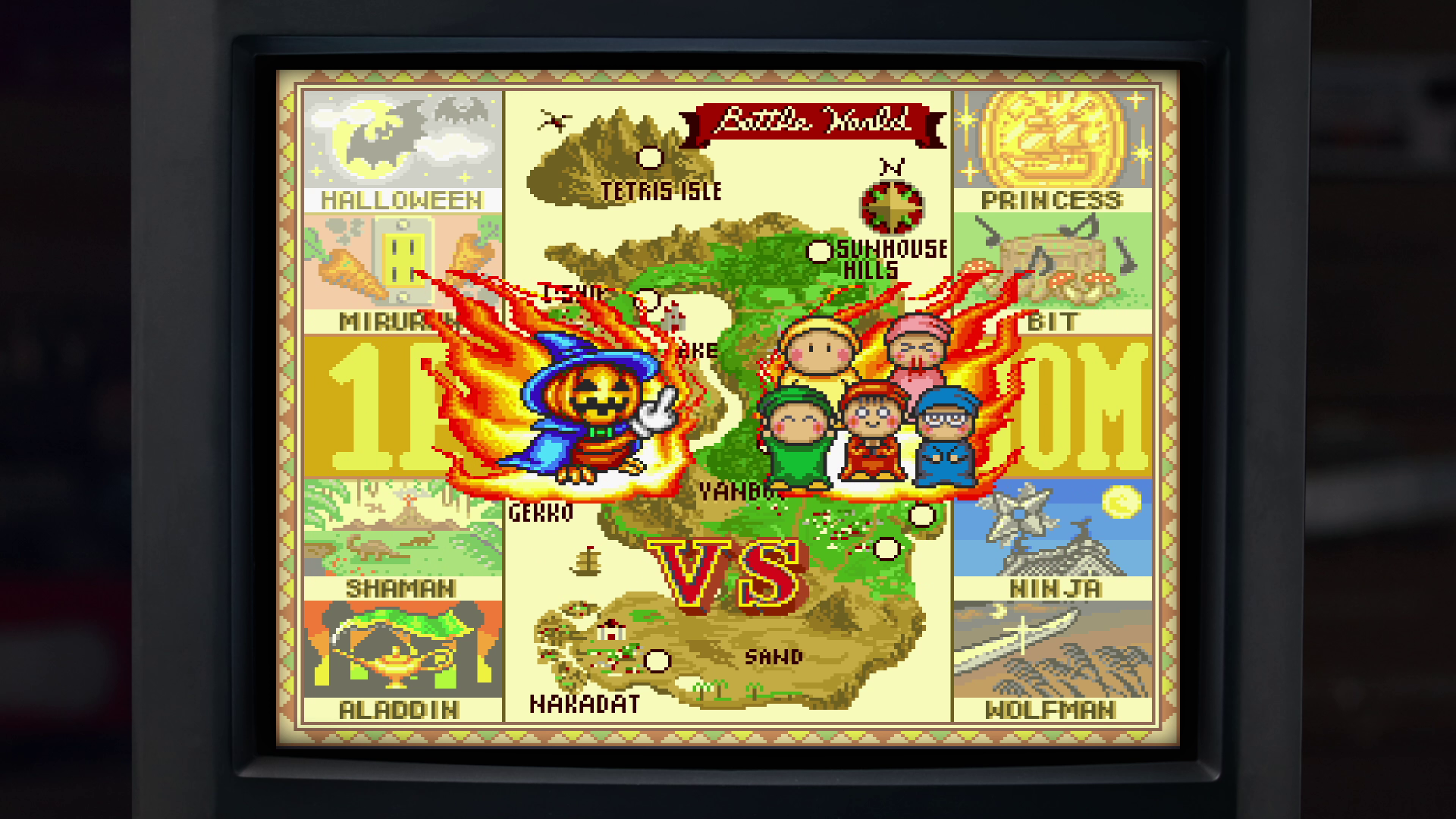
While Tetris Forever enjoys several deep cuts, it's sadly missing many big international releases, including Tetris DX, Tetrisphere, Tetris DS, Tetris Effect, etc. Even the original Game Boy version of Tetris, arguably the most pivotal installment in franchise history, is absent. Surely, Digital Eclipse had its work cut out for it — dealing with licensing and porting issues, and confronting Nintendo's reluctance to include its games in a multiplatform release — but it's still a shame that so many important versions aren't captured here.
Digital Eclipse partially makes up for these gaps with a brand new 1-4 player game, Tetris Time Warp. This new take on the classic formula introduces the Time Warp Tetrimino, a special block that sends you back in time, where you'll complete a timed challenge according to the mechanics, controls, and visuals of Tetris circa 1984, 1989, or 1993. The more lines you clear in these "Era" challenges, the higher your point multiplier will go. The Time Warp Tetrimino turns out to be a game-changer — a creative and surprising twist that adds dynamism and variety to the traditional gameplay loop.
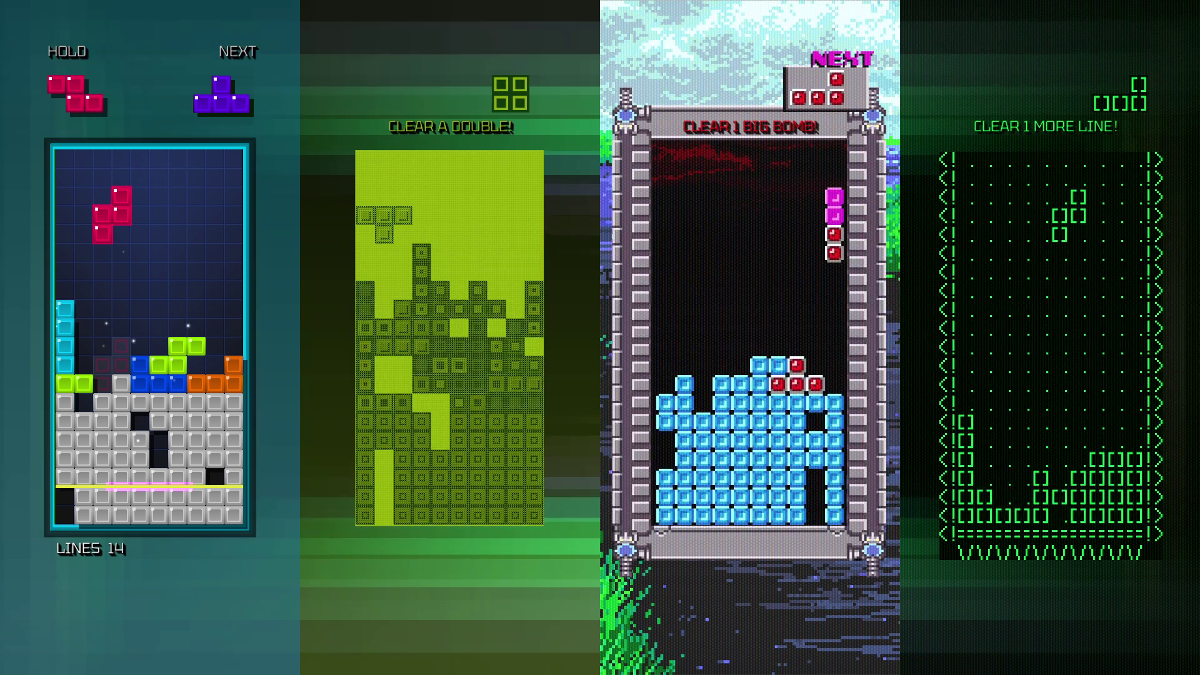
Apart from the gift of Tetris Time Warp, Digital Eclipse has provided plenty of customization options and quality-of-life features for each of the ported games. Those include save states, remappable controls, scanned manuals, "how to play" instructions, and several screen, filter, and border choices.
Once again, the Gold Master Series proves to be the gold standard in game preservation, documentation, and celebration. Thanks to Digital Eclipse, Area 5, and contributions from Henk Rogers, Maya Rogers, Alexey Pajitnov, and others, the history of Tetris has now been told more comprehensively than ever before. The only downside is that many important versions of the game are missing, ostensibly due to rights issues. In a way it's poetic, considering licensing disputes are central to the Tetris story.
This review is based on a digital copy of Tetris Forever for the NS, provided by the publisher.











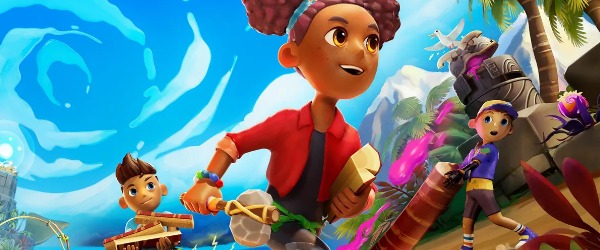


















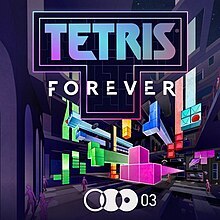

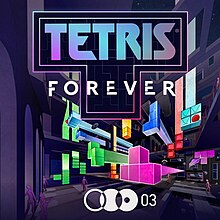

 Essay Pro
Essay Pro